Abstract
The work done at each step, during level walking at a constant average speed, to lift the centre of mass of the body, to accelerate it forward, and to increase the sum of both gravitational potential and kinetic energies, has been measured at various speeds on children of 2-12 years of age, with the same technique used previously for adults (Cavagna, 1975; Cavagna, Thys & Zamboni, 1976). The pendulum-like transfer between potential and kinetic energies (Cavagna et al. 1976) reaches a maximum at the speed at which the weight-specific work to move the centre of mass a given distance is at a minimum ('optimal' speed). This speed is about 2 X 8 km/hr at 2 years of age and increases progressively with age up to 5 km/hr at 12 years of age and in adults. The speed freely chosen during steady walking at the different ages is similar to this 'optimal' speed. At the 'optimal' speed, the time of single contact (time of swing) is in good agreement with that predicted, for the same stature, by a ballistic walking model assuming a minimum of muscular work (Mochon & McMahon, 1980). Above the 'optimal' speed, the recovery of mechanical energy through the potential-kinetic energy transfer decreases. This decrease is greater the younger the subject. A reduction of this recovery implies a greater amount of work to be supplied by muscles: at 4 X 5 km/hr the weight-specific muscular power necessary to move the centre of mass is 2 X 3 times greater in a 2-year-old child than in an adult.
Full text
PDF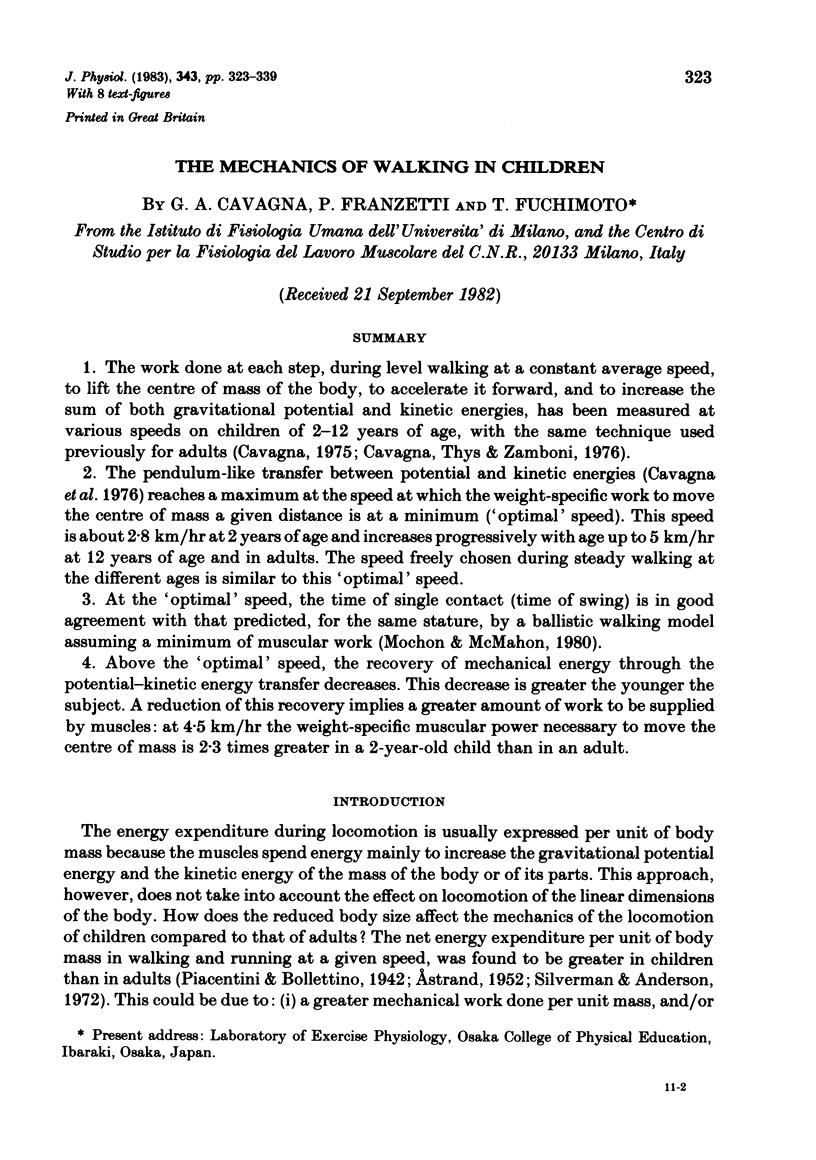
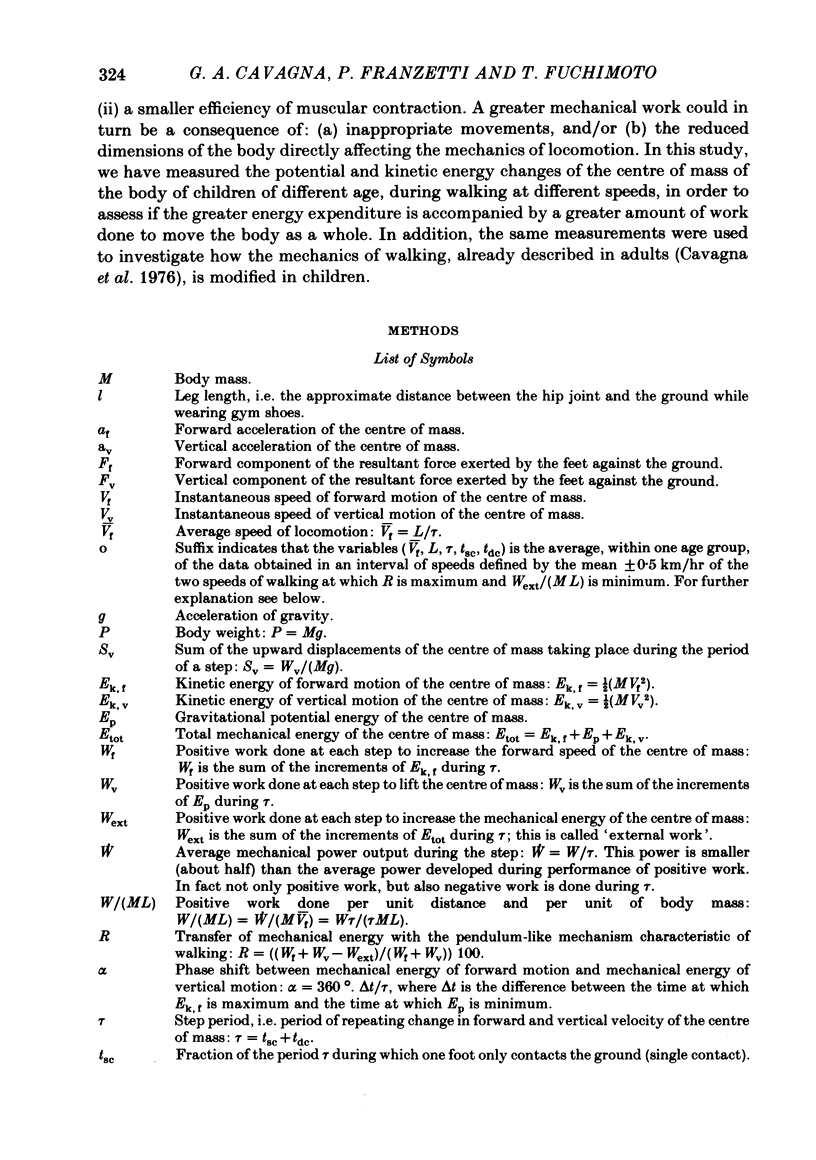
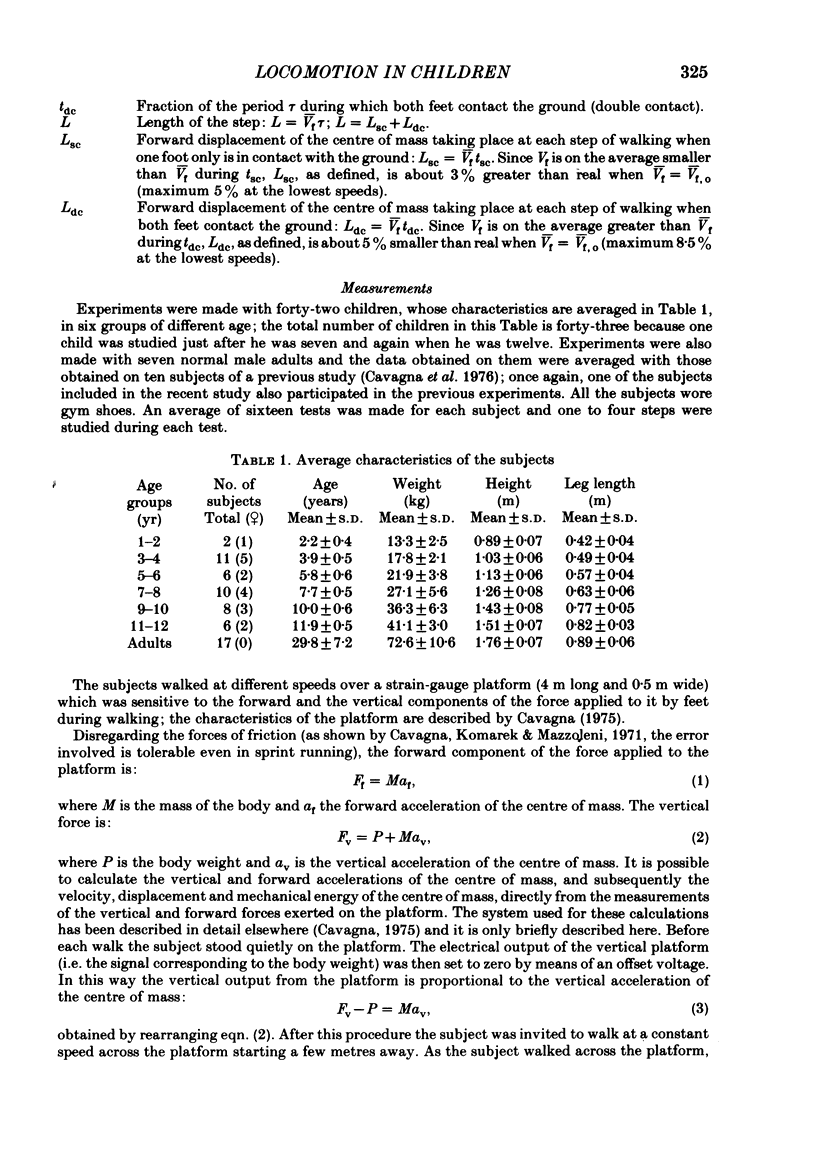
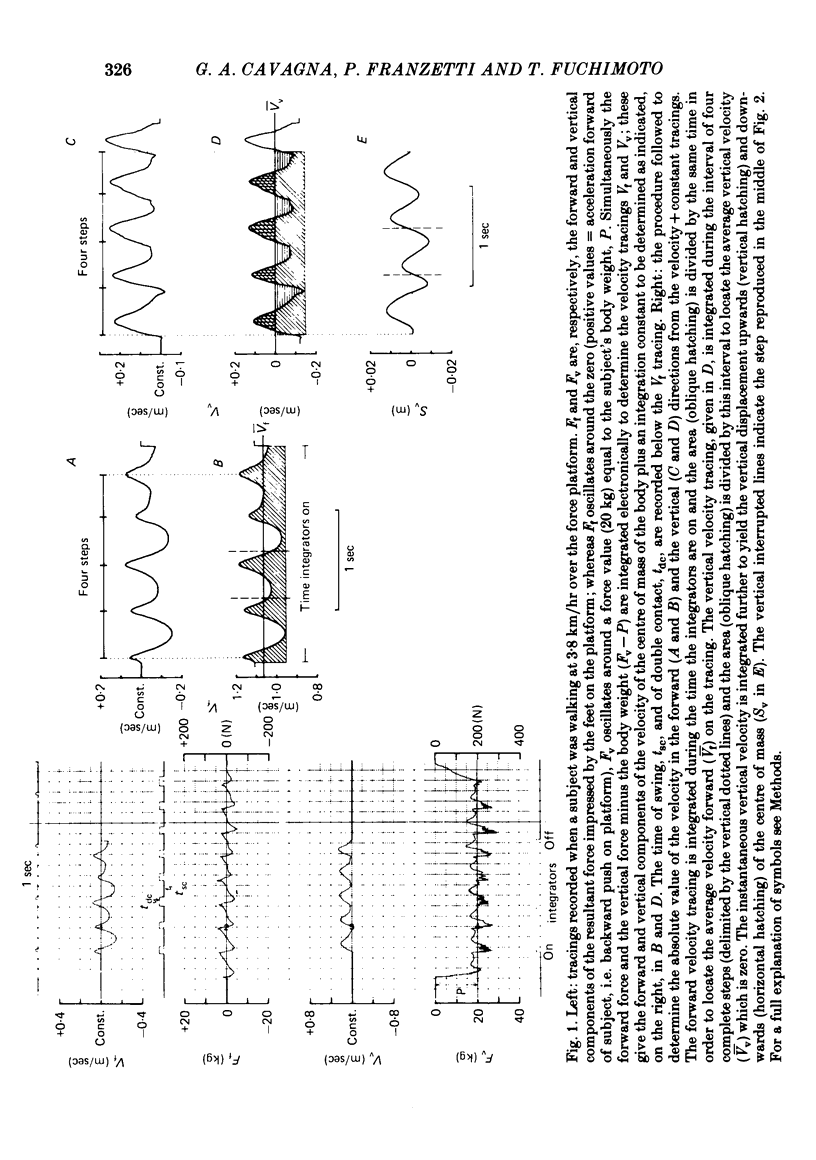
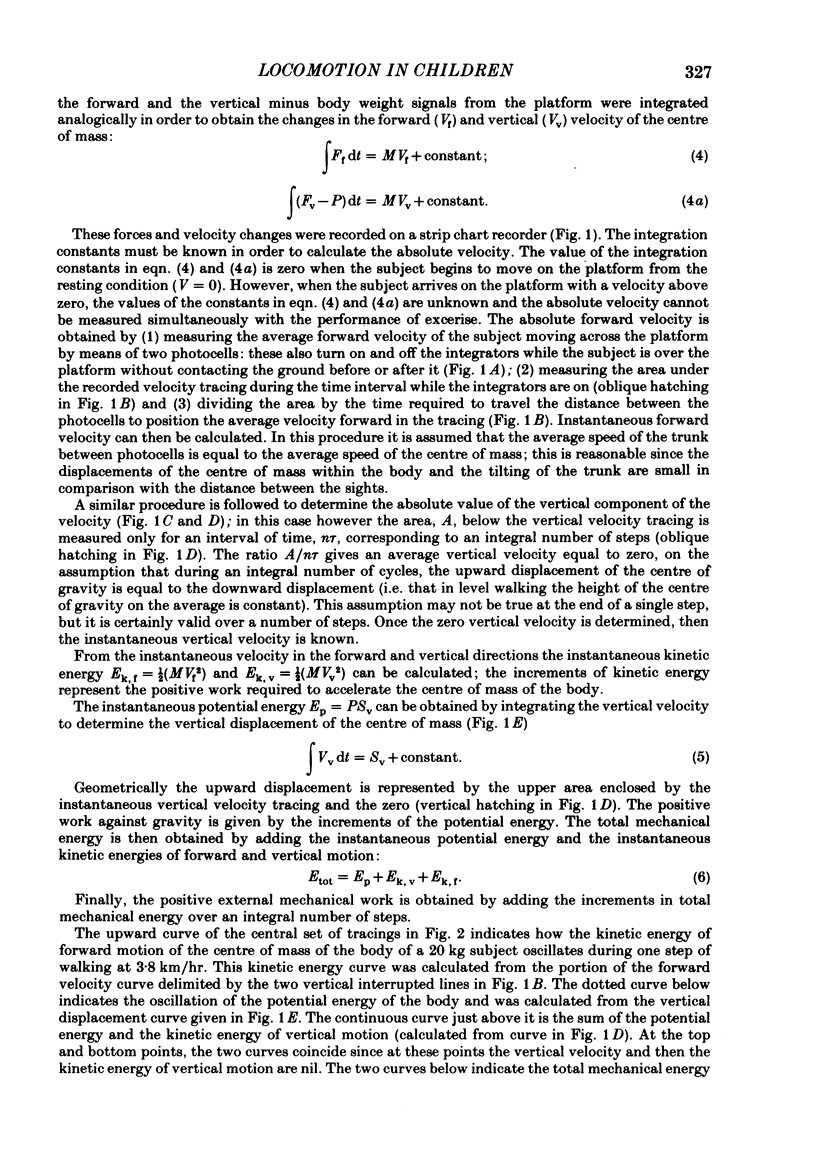
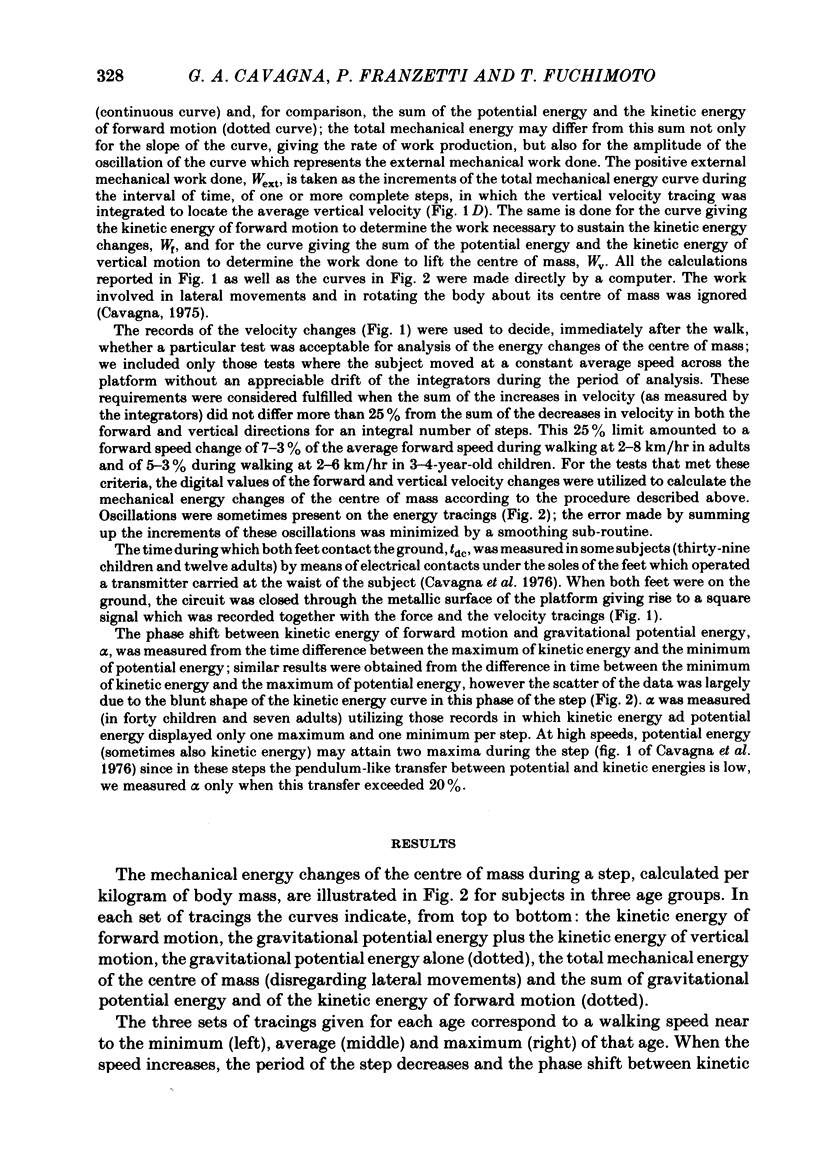
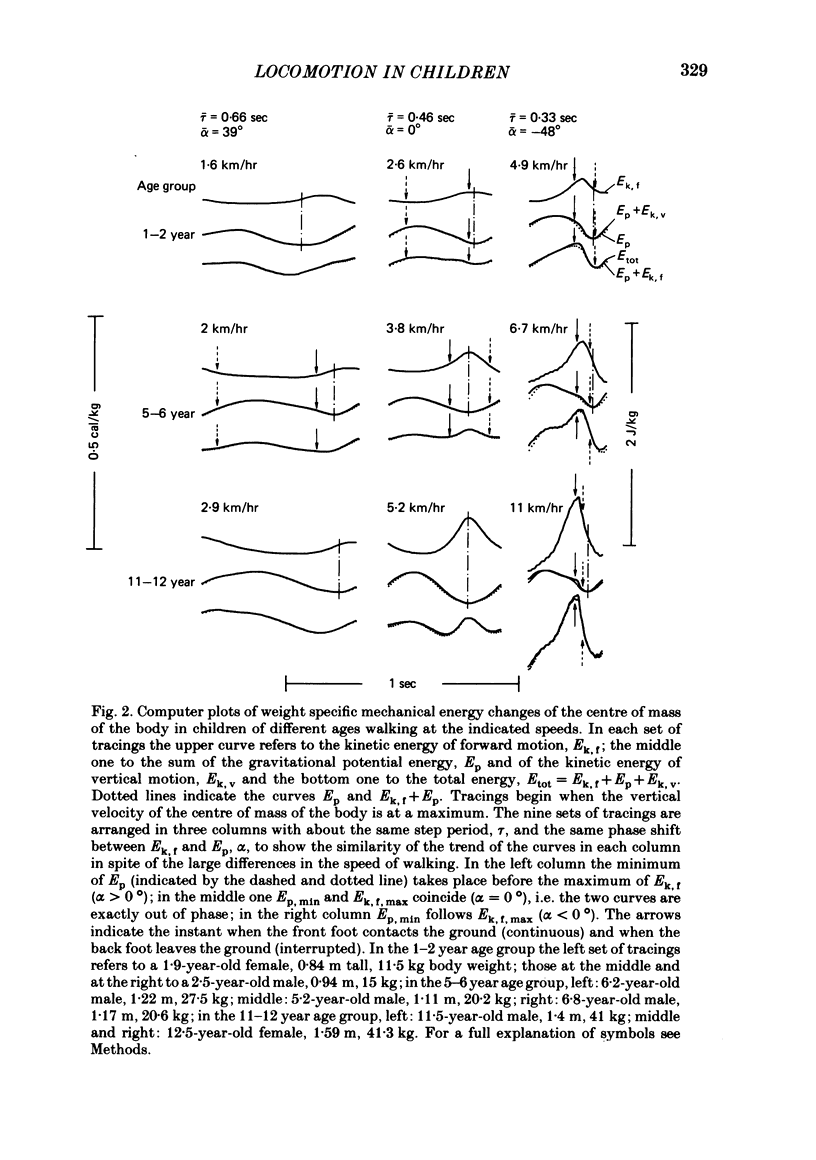
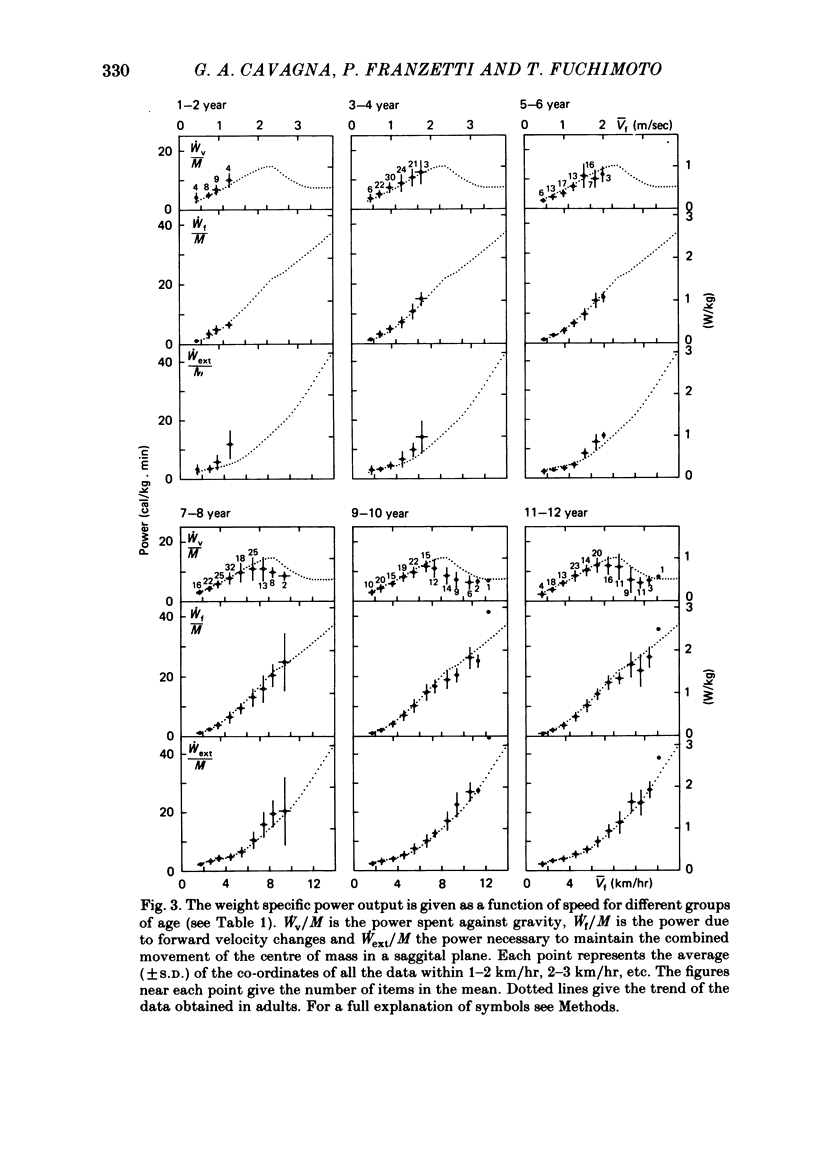
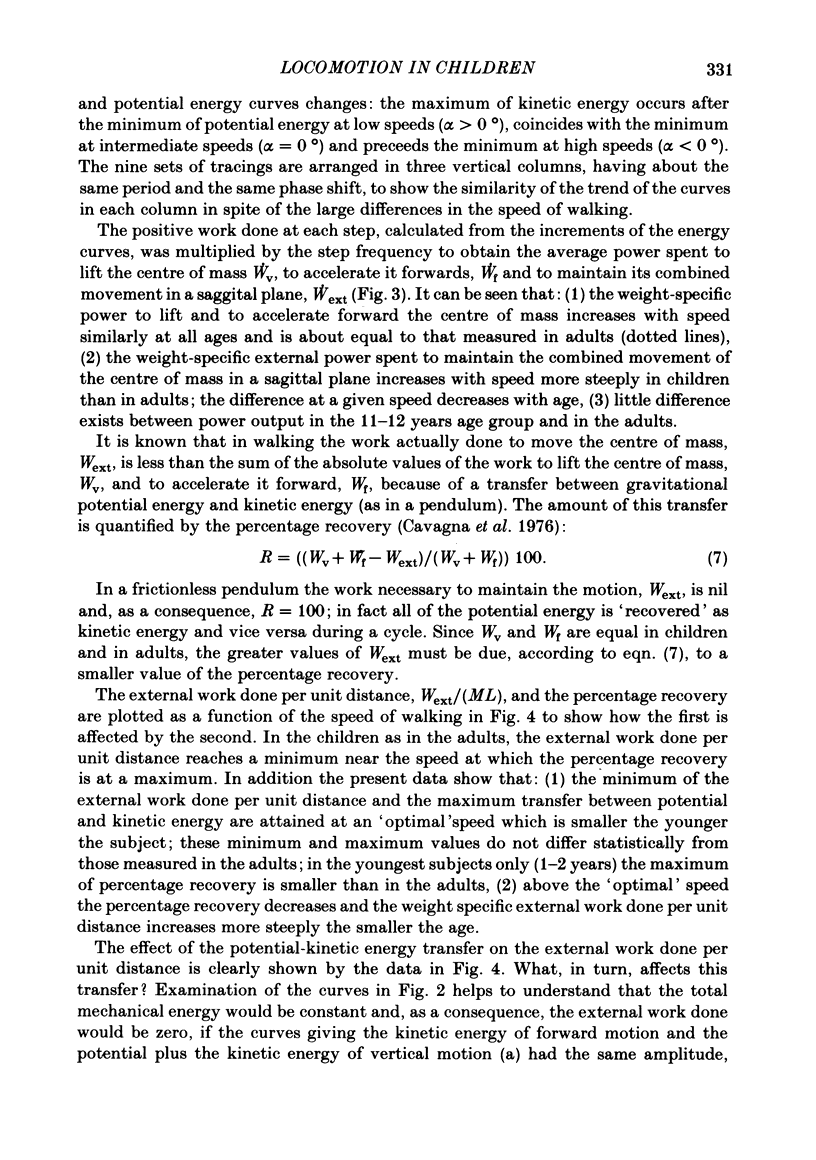
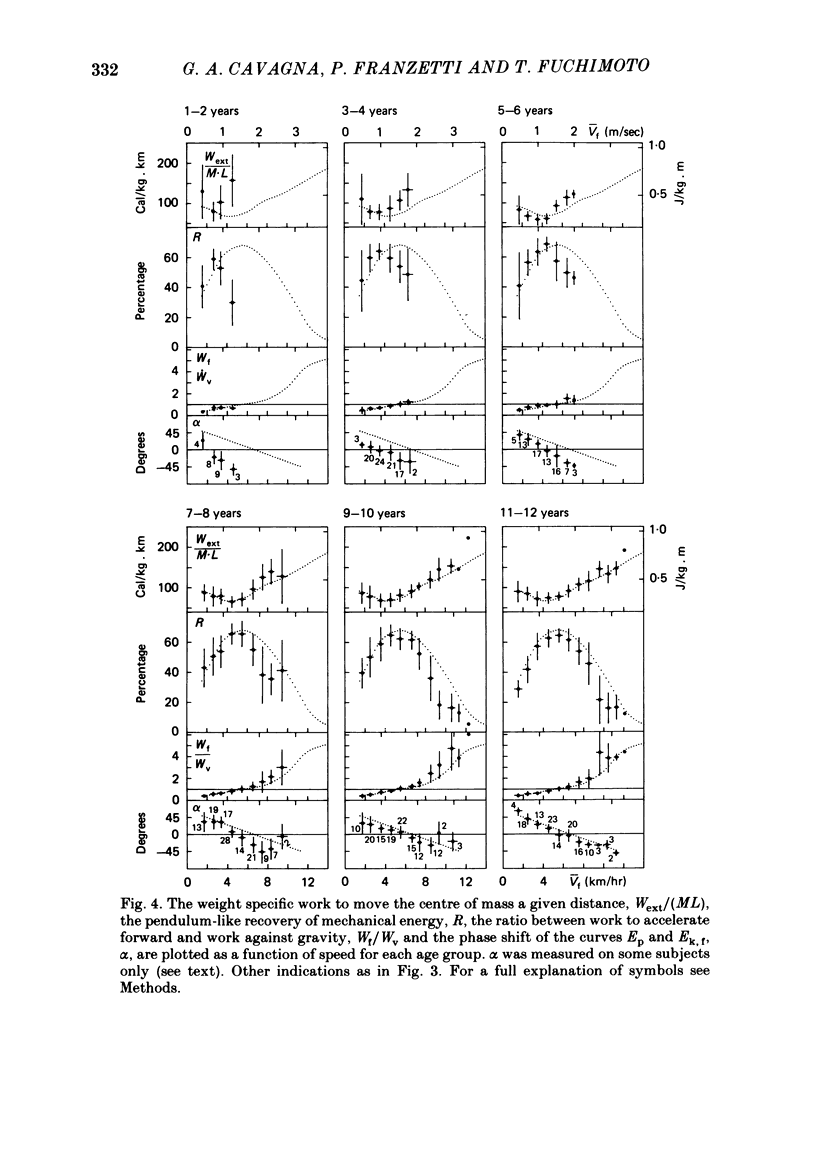
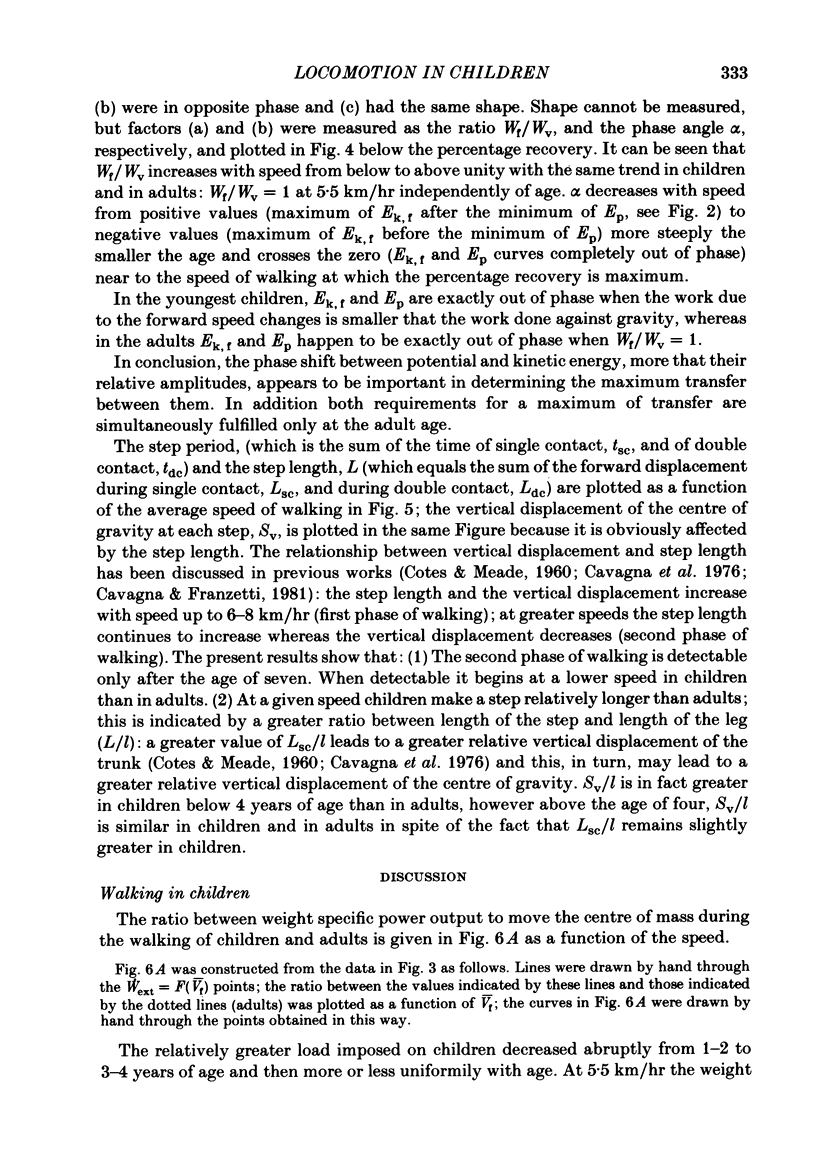
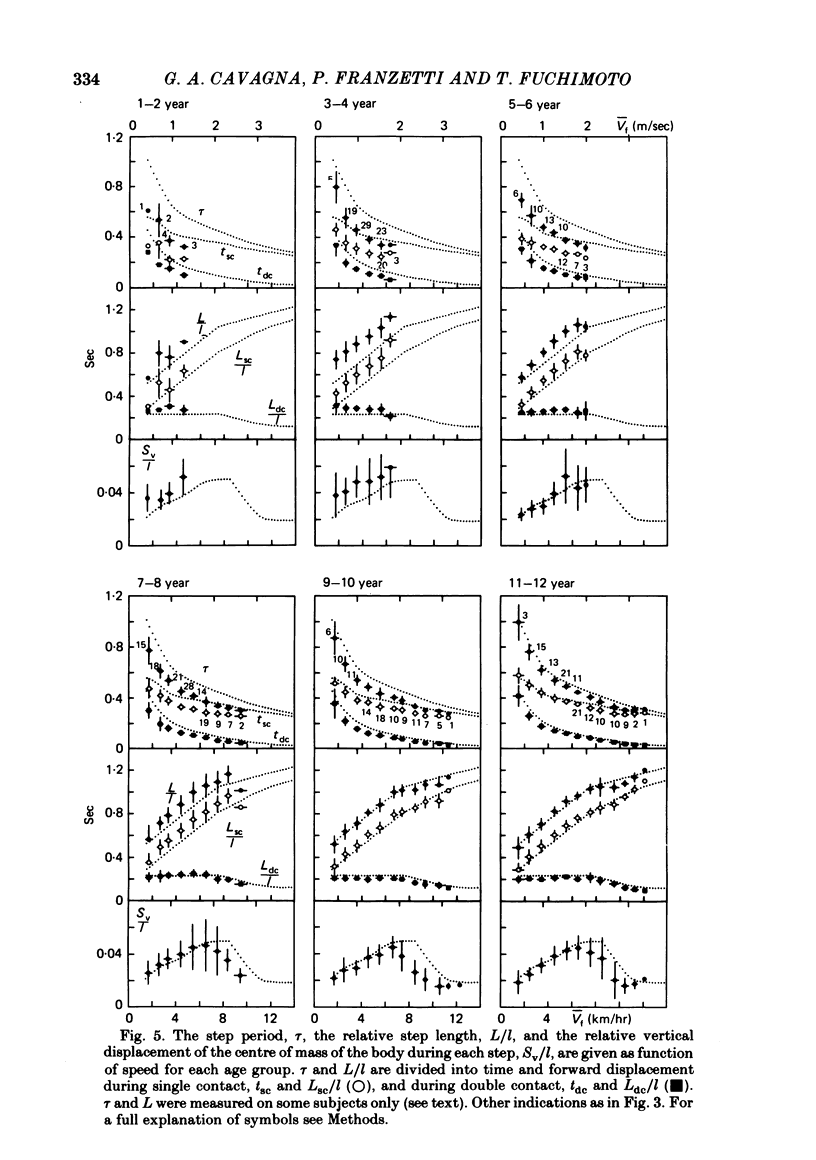
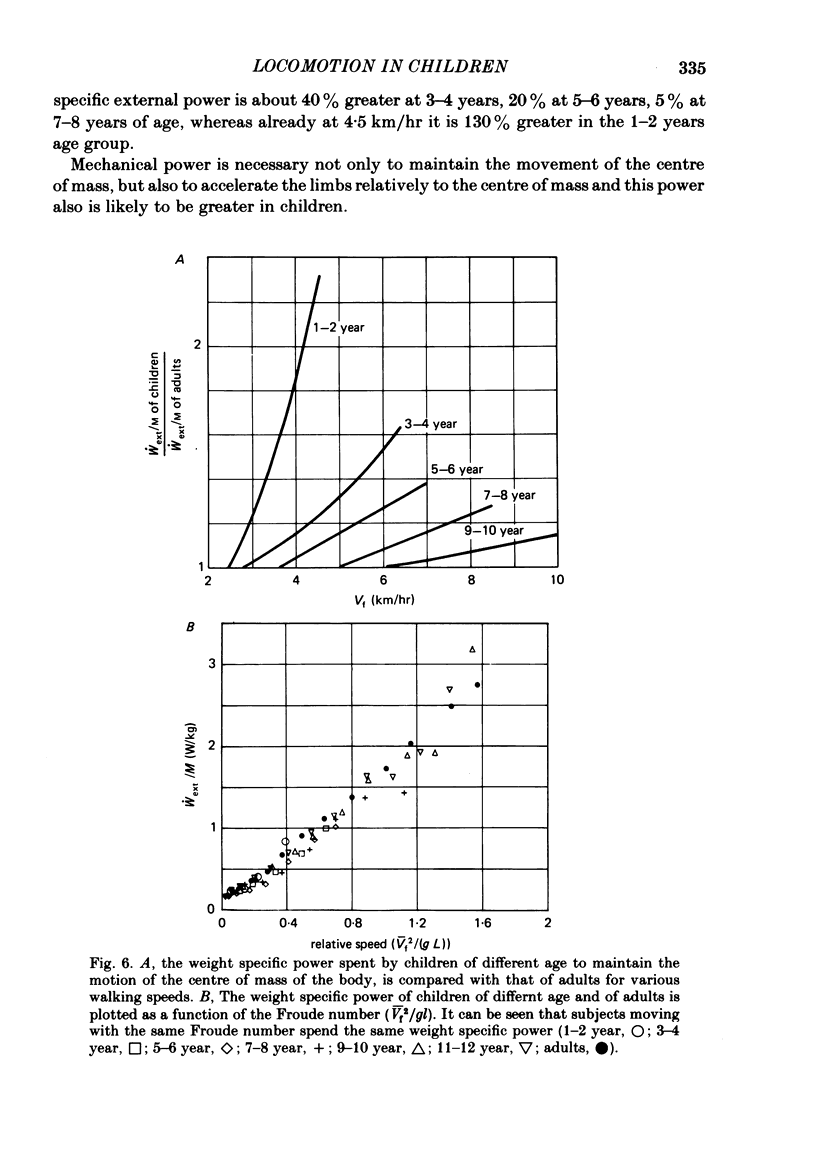
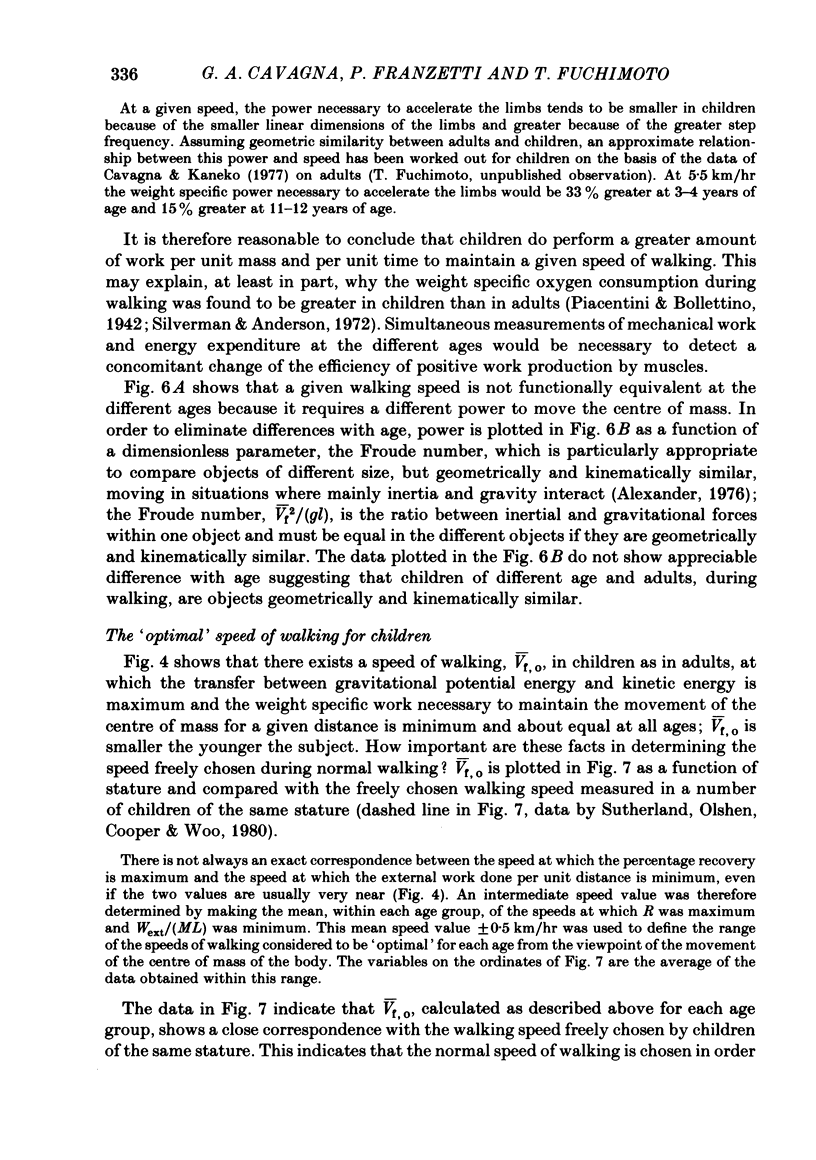
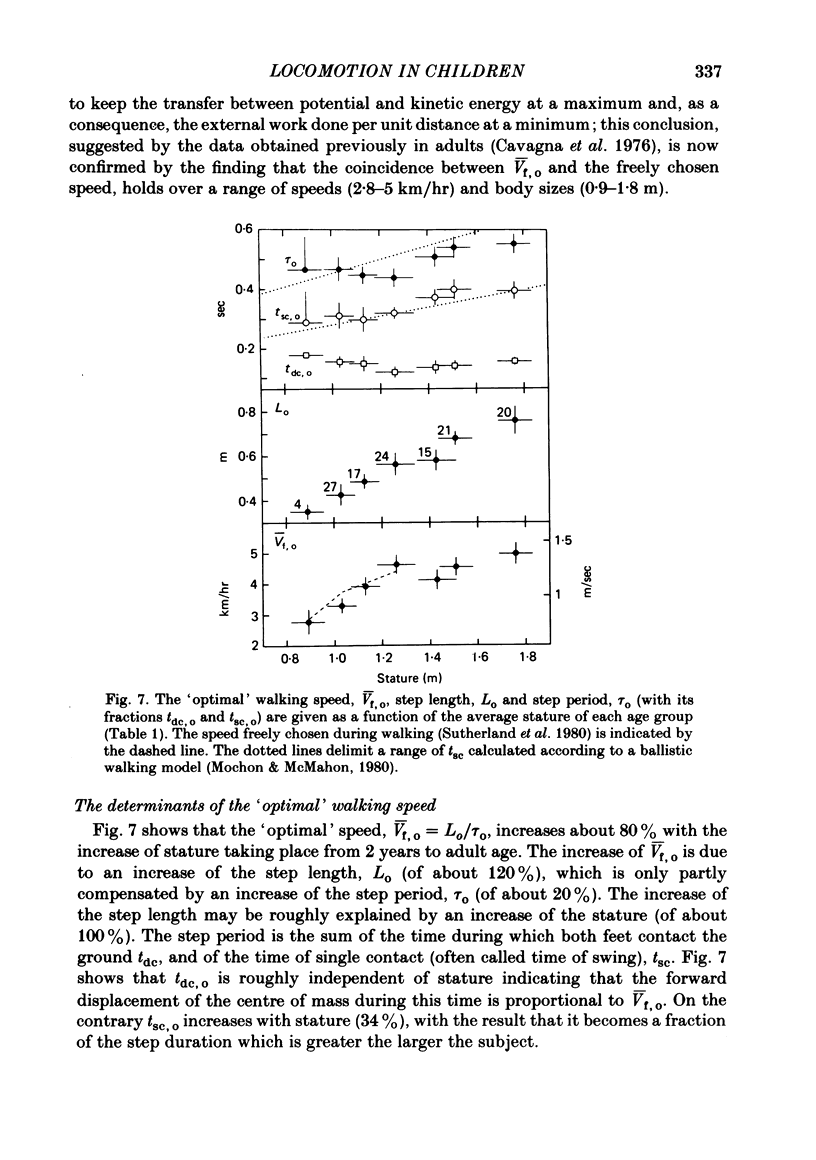
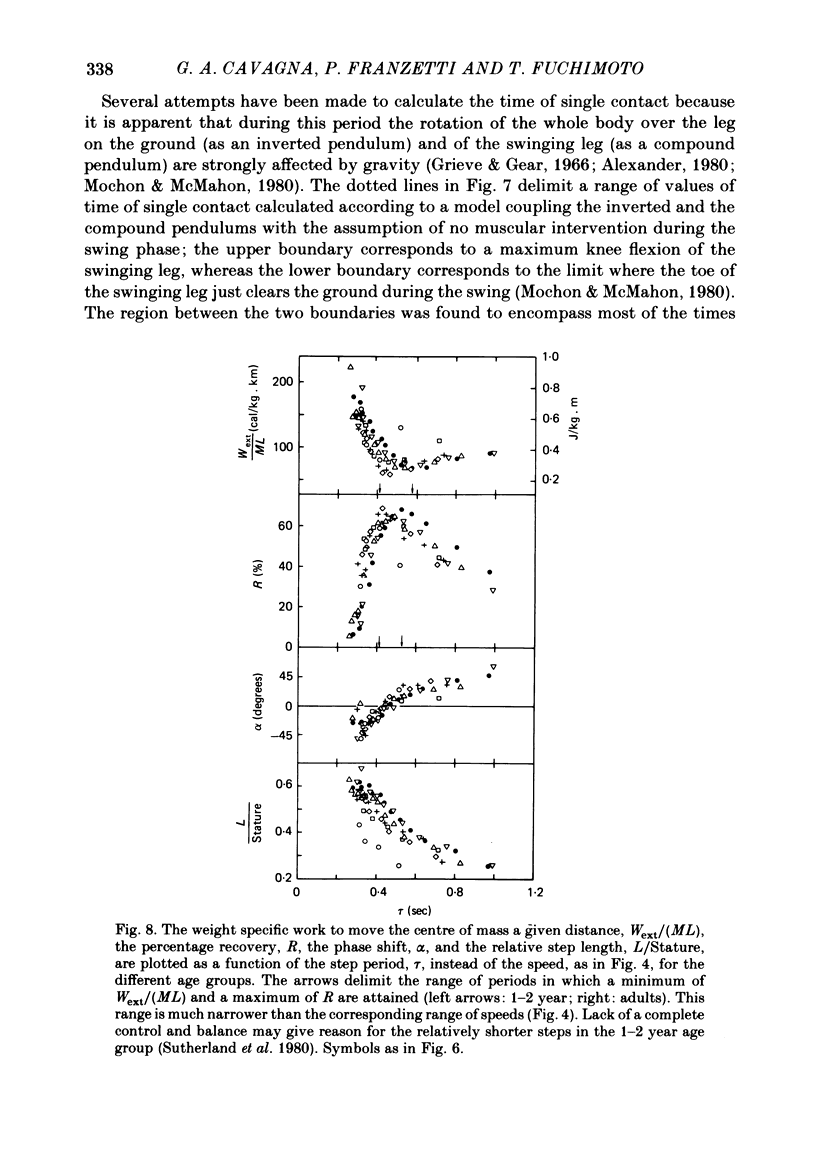
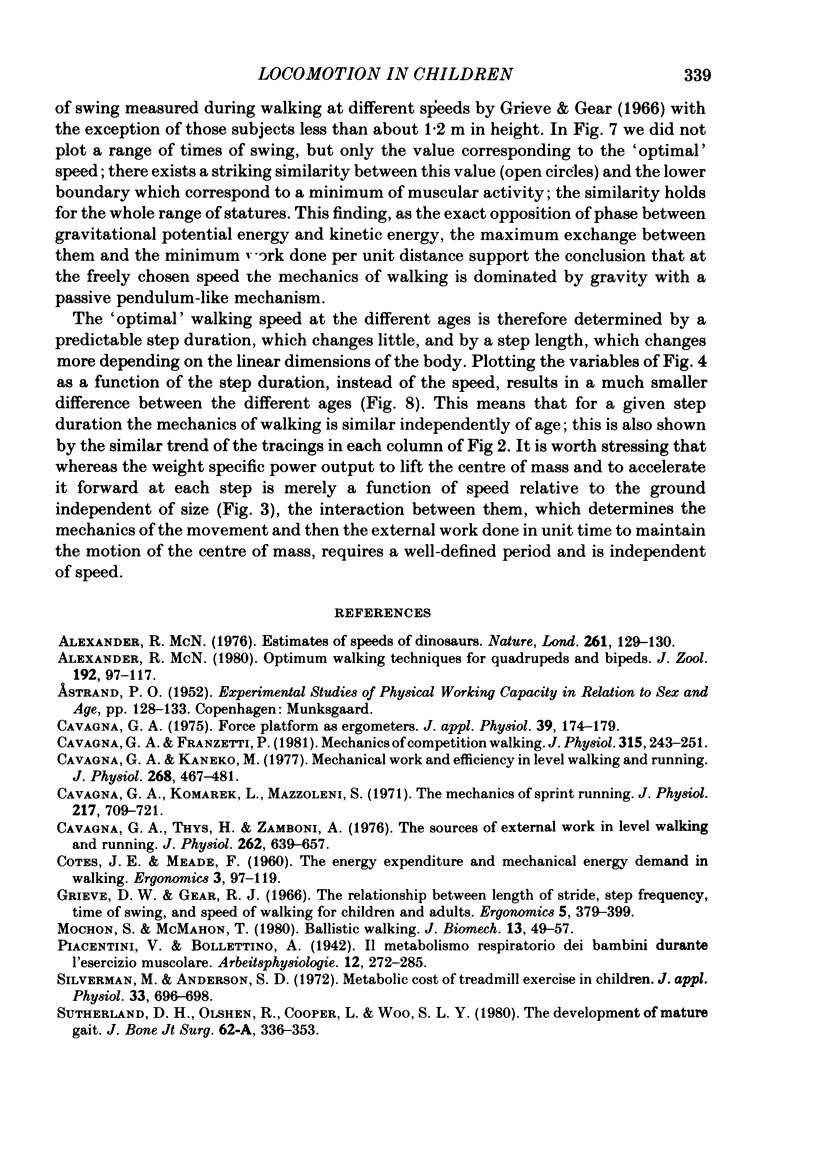
Selected References
These references are in PubMed. This may not be the complete list of references from this article.
- Cavagna G. A. Force platforms as ergometers. J Appl Physiol. 1975 Jul;39(1):174–179. doi: 10.1152/jappl.1975.39.1.174. [DOI] [PubMed] [Google Scholar]
- Cavagna G. A., Franzetti P. Mechanics of competition walking. J Physiol. 1981 Jun;315:243–251. doi: 10.1113/jphysiol.1981.sp013745. [DOI] [PMC free article] [PubMed] [Google Scholar]
- Cavagna G. A., Kaneko M. Mechanical work and efficiency in level walking and running. J Physiol. 1977 Jun;268(2):467–-81. doi: 10.1113/jphysiol.1977.sp011866. [DOI] [PMC free article] [PubMed] [Google Scholar]
- Cavagna G. A., Komarek L., Mazzoleni S. The mechanics of sprint running. J Physiol. 1971 Sep;217(3):709–721. doi: 10.1113/jphysiol.1971.sp009595. [DOI] [PMC free article] [PubMed] [Google Scholar]
- Cavagna G. A., Thys H., Zamboni A. The sources of external work in level walking and running. J Physiol. 1976 Nov;262(3):639–657. doi: 10.1113/jphysiol.1976.sp011613. [DOI] [PMC free article] [PubMed] [Google Scholar]
- Grieve D. W., Gear R. J. The relationships between length of stride, step frequency, time of swing and speed of walking for children and adults. Ergonomics. 1966 Sep;9(5):379–399. doi: 10.1080/00140136608964399. [DOI] [PubMed] [Google Scholar]
- Mochon S., McMahon T. A. Ballistic walking. J Biomech. 1980;13(1):49–57. doi: 10.1016/0021-9290(80)90007-x. [DOI] [PubMed] [Google Scholar]
- Silverman M., Anderson S. D. Metabolic cost of treadmill exercise in children. J Appl Physiol. 1972 Nov;33(5):696–698. doi: 10.1152/jappl.1972.33.5.696. [DOI] [PubMed] [Google Scholar]
- Sutherland D. H., Olshen R., Cooper L., Woo S. L. The development of mature gait. J Bone Joint Surg Am. 1980 Apr;62(3):336–353. [PubMed] [Google Scholar]


